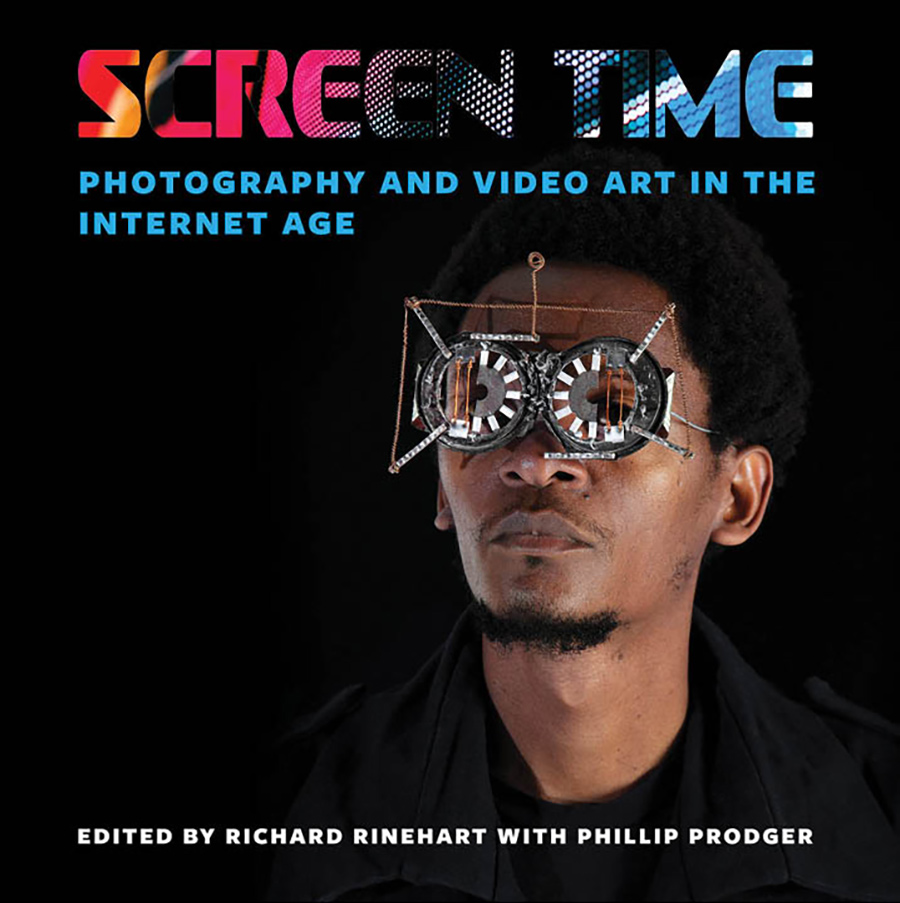
Screen Time

The book serves to catalog and document an exhibition of the same name, which Rinehart curated for the Samek and Princeton University in 2022 with Phillip Prodger, executive director of curatorial exhibitions at Curatorial. Using pieces loaned by Renée and Bob Drake ’73, the exhibition explored the relationship between art and the internet and how the barrage of digital visuals has altered viewers’ perspectives. “It aims to ask what it means to be a photographer when everyone is an Instagram influencer, where does video art meet TikTok, and how to deliver social commentary in the age of the meme,” says Rinehart, whose background is in new media art creation and examination.
While it’s standard practice for Samek exhibits to have a catalog created for internal archival purposes, Screen Time is the first to be professionally printed and distributed. By partnering with Bucknell University Press, the catalog is available to libraries around the world, elevating the Samek’s visibility. “Ultimately, it provides a more firmly enmeshed historic record and a deeper context for viewers,” says Rinehart.
As is custom for exhibition catalogs, Screen Time provides the platform for in-depth scholarly content related to the show. The catalog features depictions of all the artworks, along with concise explanations and scholarly texts written by Rinehart and Prodger. “This is the most extensive and profound exploration of the ideas presented,” says Rinehart. “It gives us, as curators, the opportunity to delve into the concepts and themes that underpin the showcased works.” Through the catalog, the artworks can be examined in the intended context, making it an invaluable resource for academics, art enthusiasts and historians alike.
In Rinehart’s view, the cultural impact of the internet is far-reaching, permanently altering our perspectives and fundamentally changing the way we view reality. Screen Time: Photography and Video Art in the Internet Age was part of his ongoing effort to examine the ever-evolving nature of art and technology to help others reflect on the ways our view of art has been impacted by the internet, and how that contributes to the shaping of our realities. Further, “It reminds us of the power of art,” Rinehart says. “To reflect, to challenge and to inspire in this new era of connectivity and shared experiences.”
alumni & faculty books
Refuge for the Khymera (self-published, 2023)
During his career as a professor of computer science and mathematics, Davis co-authored many professional scholarly papers. After retiring, Davis craved a creative outlet and began putting his daydreams to paper as a science-fiction writer. In his 11th book, Davis tells “a tale of imagination versus reality” as his main character, a science-fiction writer, returns from a science-fiction convention with an alien hiding in his car. Davis recommends his books to anyone who “enjoys contemplating reality” and is “not afraid of mathematics, physics, philosophy and religion.”
Lin Poyer ’75
War at the Margins: Indigenous Experiences in World War II (University of Hawai’i Press, 2022)
Poyer, a professor emerita at the University of Wyoming, is a cultural anthropologist who has extensively studied how Indigenous societies were affected by World War II. In this book, Poyer uses historical and ethnographic sources to reveal the wide range of wartime impacts on these groups — from combat roles to life on the homefront.
Lois Svard, professor emerita of music
The Musical Brain: What Students, Teachers, and Performers Need to Know (Oxford University Press, 2023)
For nearly three decades, Svard, an accomplished pianist, was a professor of music at Bucknell, where she taught a course on neuroscience and music. The topic fascinated her and became a focus of her scholarly work, evolving into a blog and now this book. Svard shares her research findings as she explores the biological foundations of music, music cognition, the musical abilities of babies, and the cognitive advantages of studying music. She includes the stories and experiences of accomplished musicians whose lives have been shaped by their exposure to music.